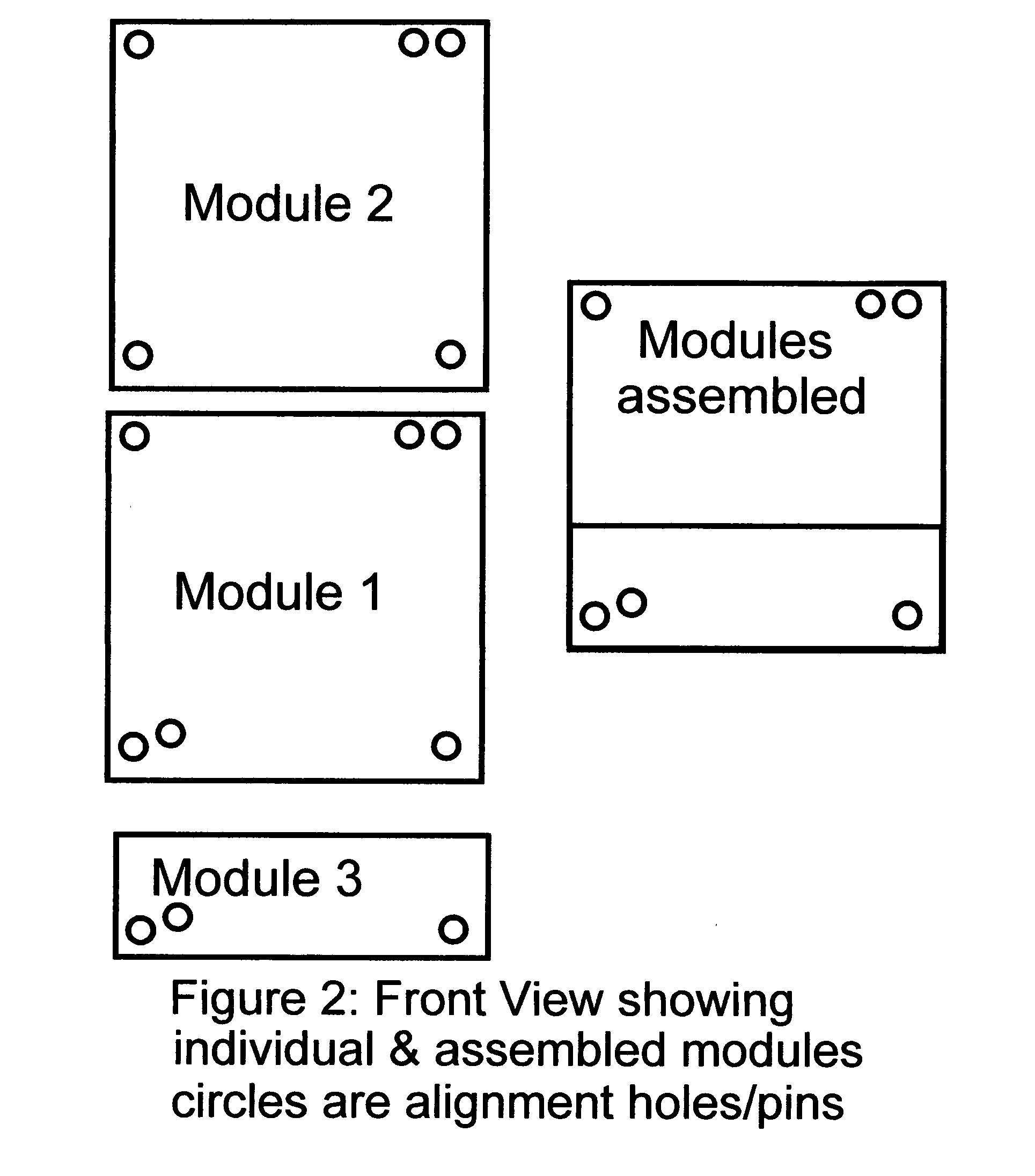Robust modular electronic device without direct electrical connections for inter-module communication or control
a technology of electronic devices and direct electrical connections, applied in the direction of coupling device connections, electrical apparatus casings/cabinets/drawers, instruments, etc., can solve problems such as degrading device performance, and achieve the effects of enhancing device operation, reducing device performance, and facilitating protection
- Summary
- Abstract
- Description
- Claims
- Application Information
AI Technical Summary
Benefits of technology
Problems solved by technology
Method used
Image
Examples
example 1
[0086]Assumptions for One Hypothetical application, an implementation with no inter-module electrical connections:[0087]There is a main function module, which contains an electronic camera, a small LCD screen, magnetic control switches, a small memory, a flash unit, and strategically located inductive receiver / transmitter pairs.[0088]A second module, a power module has alignment pins that fit into alignment holes on front side of the camera. One alignment pin acts as the core of a power transformer. Power is conducted inductively to and potentially through the camera module to other modules. A magnet inside of the camera module applies a retention force to the second alignment ping that holds the modules together.[0089]A third module, a memory extension module connects to the backside of the camera through small alignment pins. This module like module 2 is magnetically retained, and contains an inductive power transfer element. Here, however the alignment pins also align inductive t...
example 2
[0091]Assumptions for one Hypothetical application, an implementation with direct power interconnects:[0092]There is a main function module, which contains an electronic camera, a small LCD screen, magnetic control switches, a small memory, a flash unit, and strategically located inductive receiver / transmitter pairs.[0093]A second module, a battery module has small alignment pins that fit into alignment holes on the left side of the camera. These alignment pins align power and ground connections which connect when the modules are pressed together. Magnets inside of the camera module apply retention force that holds the modules together.[0094]A third module, a memory extension module connects to the right side of the camera through small alignment pins. This module like module 2 is magnetically retained, and contains power interconnects. Here, however the alignment pins also align inductive transmitters and receivers used to transfer data between modules 1 and 2.[0095]A fourth module...
example 3
[0096]In this case the implementation is a sealed yet extendable computer built with features of this new method, yet in this case one or more modules are liquid filled. The fluid cools electronic components and / or provides resistance to crushing when in a high-pressure environment. In this example the fabrication process includes:[0097]The case consists of two pieces, a top and a bottom.[0098]The electronic module is mounted inside the case's bottom part and connected to non-contact communication transceivers and power mechanisms.[0099]The top of the case is sealed onto the bottom using epoxy, gasket material, RTV, silicone, or other airtight sealing mechanism that (potentially) conduct heat through the seal.[0100]The module is filled with a liquid (such as Flourinert 3M trademarked coolant, or a non-electrically conductive oil) through a small access hole.[0101]The access hole is itself sealed thus completing the module's assembly.
PUM
 Login to View More
Login to View More Abstract
Description
Claims
Application Information
 Login to View More
Login to View More - R&D
- Intellectual Property
- Life Sciences
- Materials
- Tech Scout
- Unparalleled Data Quality
- Higher Quality Content
- 60% Fewer Hallucinations
Browse by: Latest US Patents, China's latest patents, Technical Efficacy Thesaurus, Application Domain, Technology Topic, Popular Technical Reports.
© 2025 PatSnap. All rights reserved.Legal|Privacy policy|Modern Slavery Act Transparency Statement|Sitemap|About US| Contact US: help@patsnap.com



